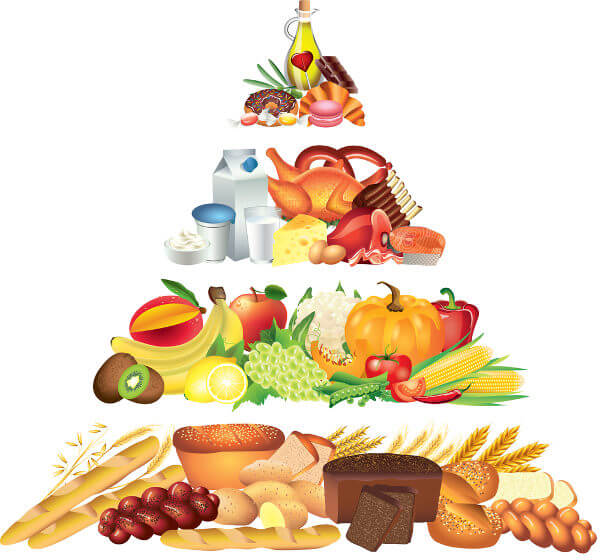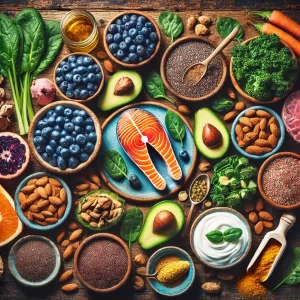The Food Pyramid

The food pyramid is a visual representation of how different food groups contribute to a healthy diet. It was designed to help people understand and implement balanced eating habits by categorizing foods into groups and indicating the recommended daily servings for each. Here’s a basic outline of the traditional food pyramid:
- Base Layer (Grains):
- This bottom layer consists of bread, cereal, rice, and pasta.
- Recommended servings: 6-11 servings per day.
- These foods provide carbohydrates, which are a major source of energy.
- Divided into two parts: fruits and vegetables.
- Recommended servings: 3-5 servings of vegetables and 2-4 servings of fruits per day.
- These foods are rich in vitamins, minerals, and fiber.
- Split into two categories: protein sources (meat, poultry, fish, beans, eggs, and nuts) and dairy products (milk, yogurt, cheese).
- Recommended servings: 2-3 servings of protein sources and 2-3 servings of dairy products per day.
- These foods provide essential proteins, calcium, and other nutrients.
- Top Layer (Fats, Oils, and Sweets):
- This smallest section includes fats, oils, and sweets.
- Recommended servings: use sparingly.
- These foods should be consumed in moderation due to their high calorie content and limited nutritional value.

The food pyramid has evolved over the years. The U.S. Department of Agriculture (USDA) replaced it with MyPlate in 2011, which offers a more simplified approach. MyPlate focuses on portion sizes and the balance of food groups on a plate, emphasizing the importance of fruits, vegetables, grains, protein, and dairy in each meal.
Understanding the food pyramid helps people make informed dietary choices, promoting a balanced diet and a healthier lifestyle.




